A set of diagrams where learners must identify the type or types of bonding represented
A variety of types of diagram are used in this activity, to help learners be able to interpret and use various symbolic models for bonding.
How to use this resource
Point out to learners that some of the diagrams refer to individual atoms or molecules, while others show some of the particles in named substances, and they should therefore pay close attention to the labels under the figures.
- When to use? Use with 14–16 learners, to see if they can identify examples of the bond types met at this level (covalent, ionic and metallic bonds).
- Group size? Suitable for independent work in class to diagnose learners’ misconceptions.
- Topics assessed? Chemical bonding (including: ionic, covalent, metallic, polar, hydrogen, dipole-dipole, van der Waals, solvation, dative, double, delocalised)
- How long? 10–15 minutes
Rationale
Research suggests that learners focus on covalent and ionic bonding, and can either miss, or down-play the importance of, other types of bonding (read a discussion of learners’ ideas about atomic structure and other chemical structures). Use this resource to quickly audit learners’ awareness of different bond types.
A variety of types of diagram are used in this resource, as it is important for learners to be able to interpret and use various ways of representing chemical species (read more about learners’ beliefs in alternative ideas).
Although 14–16 year old learners should be able to identify ionic, covalent and metallic bonding in any of the diagrams in the full-length resource, some of the chemical species are particularly challenging due to the complexity and unfamiliarity of either the substance, diagram or both.
For example, 14–16 learners may find identifying the bonding in the Aluminium chloride dimer challenging as they may not have come across the word ’dimer’, nor the arrow notation in the diagram and will expect a metal and a non-metal to form an ionic compound. However, 14–16 learners will be familiar with the use of a single line to represent a single covalent bond in a structural formula. This will challenge learners’ ability to interpret diagrams and give the opportunity to preview the more complex nature of bonding they will encounter in post-16 studies, which is supported via the lesson slides.
Scaffolding
Use the simplified version of the resource, with only nine diagrams to interpret, to support less confident learners. The diagrams in the shortened version have been specifically chosen for their familiarity to 14–16 learners.
Both of these versions are adapted from the original 16–18 version of the resource.
Answers
- Sodium chloride lattice: ionic
- Diamond lattice: covalent
- Benzene molecule: covalent, delocalised
- Copper lattice: metallic
- Hydrogen fluoride molecule: covalent, polar
- Liquid water: covalent, polar; hydrogen, covalent, van der Waals forces, dipole-dipole forces
- Fluorine molecule: covalent
- Silver nitrate solution: covalent, polar; hydrogen, dipole-dipole, van der Waals forces, solvent-solute interactions
- Oxygen gas: covalent (double/sigma + pi), van der Waals forces
- Sulfur molecule: covalent
- Sodium atom: no chemical bonding (although intra-atomic forces of similar nature)
- Aluminium chloride dimer: polar, including dative (coordinate) covalent
- Carbon dioxide molecule: covalent, polar (double/sigma + pi)
- Ethanoic acid dimer: covalent, polar, hydrogen
- Iodine lattice: covalent, van der Waals forces
- Ammonia molecule: covalent, polar
- Magnesium oxide lattice: ionic
- Liquid hydrogen chloride: covalent, polar, van der Waals forces
Downloads
Spot the bonding lesson slides 14–16
Presentation | PDF, Size 0.76 mbSpot the bonding student sheet 14–16
Handout | PDF, Size 0.6 mbSpot the bonding scaffolded student sheet 14–16
Handout | PDF, Size 0.34 mbSpot the bonding teacher guidance 14–16
Handout | PDF, Size 0.65 mbSpot the bonding lesson slides 14–16
Presentation | PowerPoint, Size 0.99 mbSpot the bonding student sheet 14–16
Editable handout | Word, Size 1.04 mbSpot the bonding scaffolded student sheet 14–16
Editable handout | Word, Size 0.73 mbSpot the bonding teacher guidance 14–16
Editable handout | Word, Size 0.72 mb
Additional information
These resources have been taken from the book Chemical Misconceptions: Prevention, Diagnosis and Cure: Theoretical Background, Volume 2, by Keith Taber.
The resource was adapted and updated in 2025 by Kirsty Patterson.

Chemical misconceptions
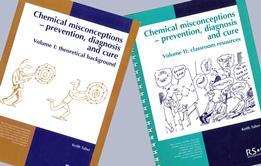
Discover classroom strategies and activities to tackle common misconceptions among students in chemistry, and explore the theory behind different approaches.
- 1
 Currently
reading
Currently
reading
Spot the bonding | 14–16 years
- 3
- 4
- 5
- 6
- 7
- 8
- 9
- 10
- 11
- 12
- 13
- 14
- 15
- 16
- 17
- 18
- 19
- 20
- 21
- 22
- 23
- 24
- 25
- 26
- 27
- 28
- 29
- 30
- 31
- 32
- 33
- 34
- 35
- 36




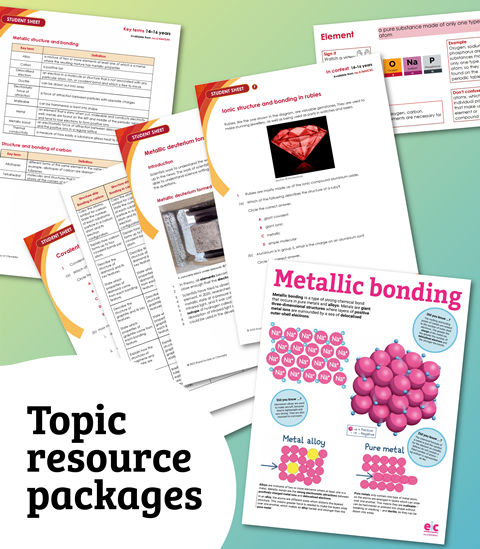












































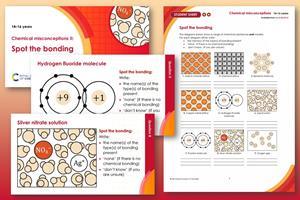
















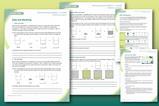
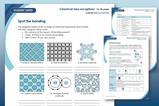
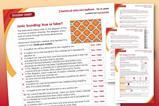






































No comments yet